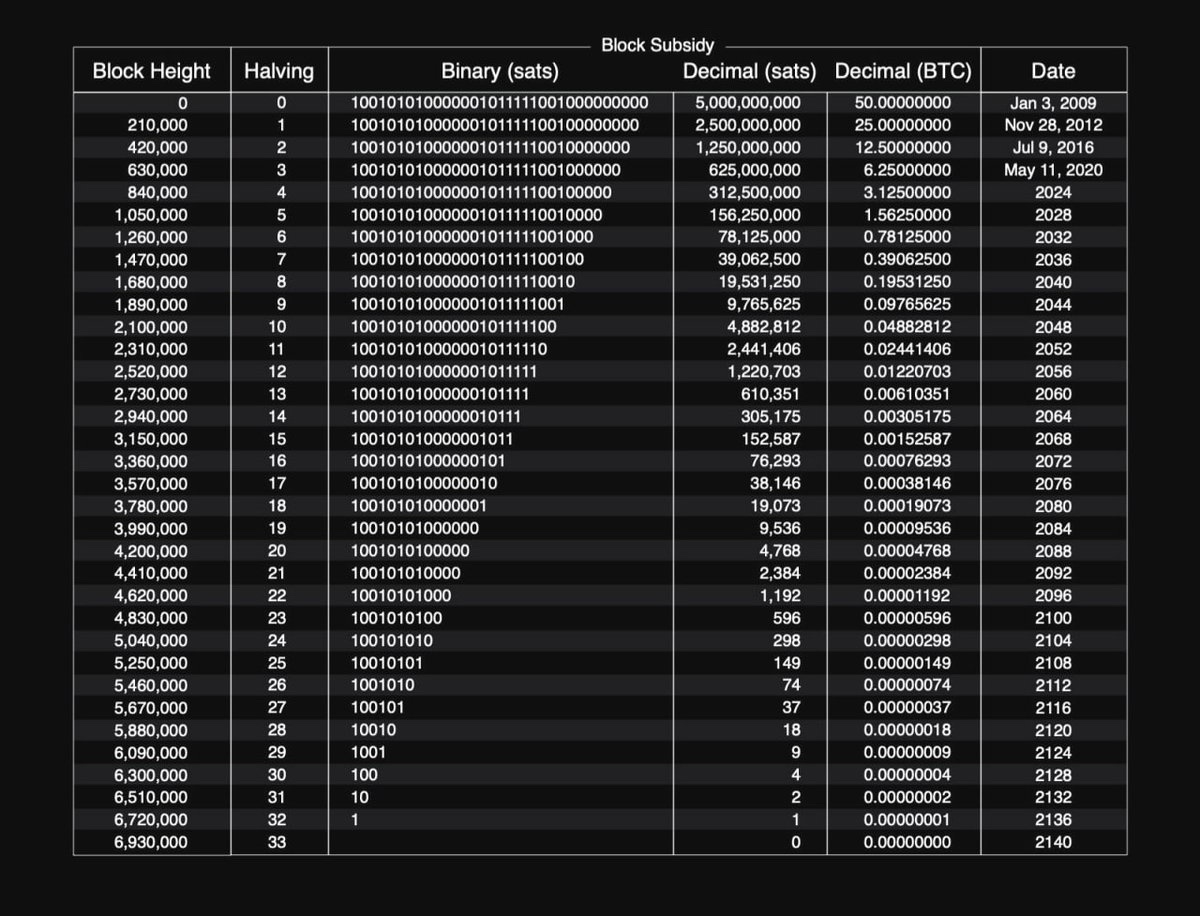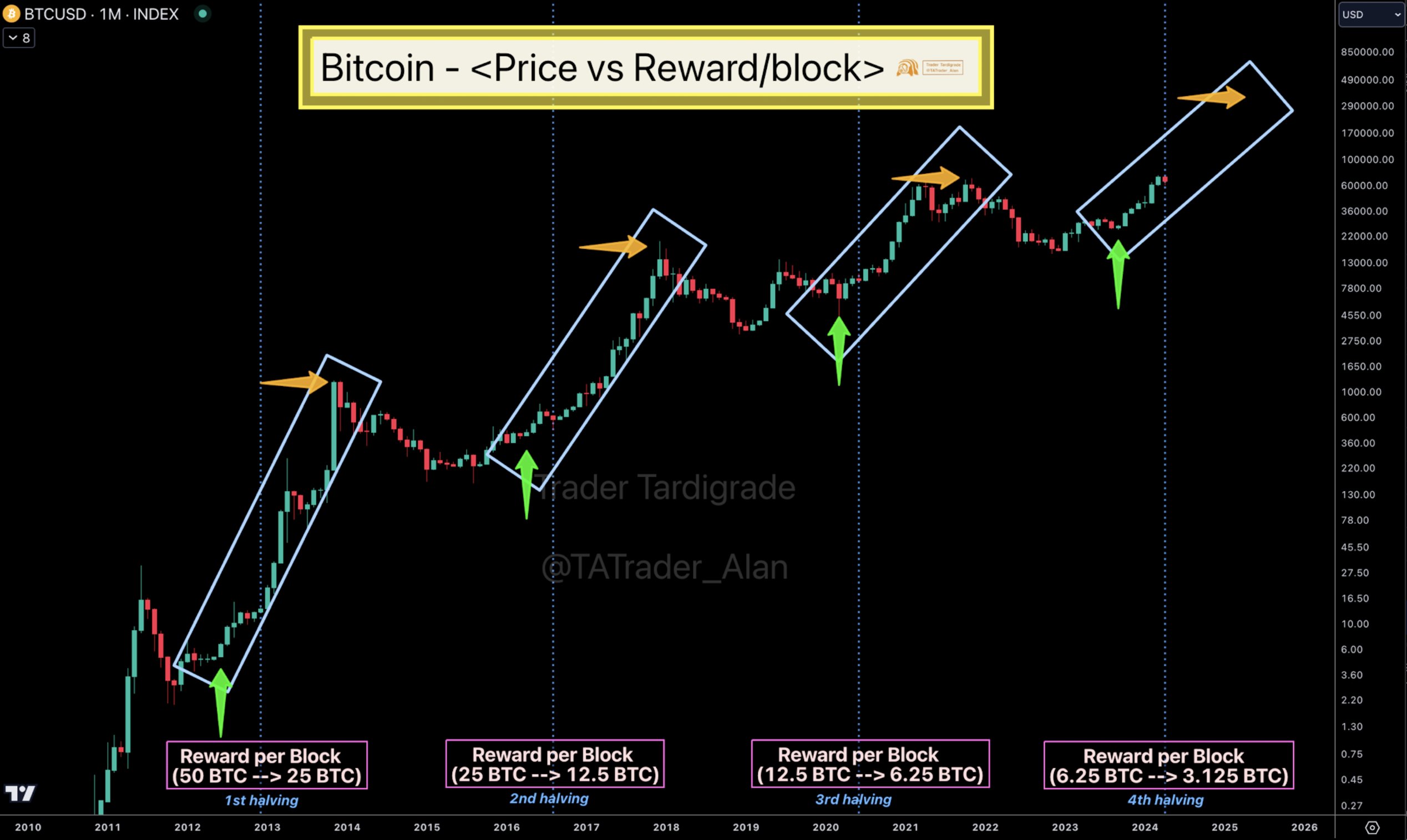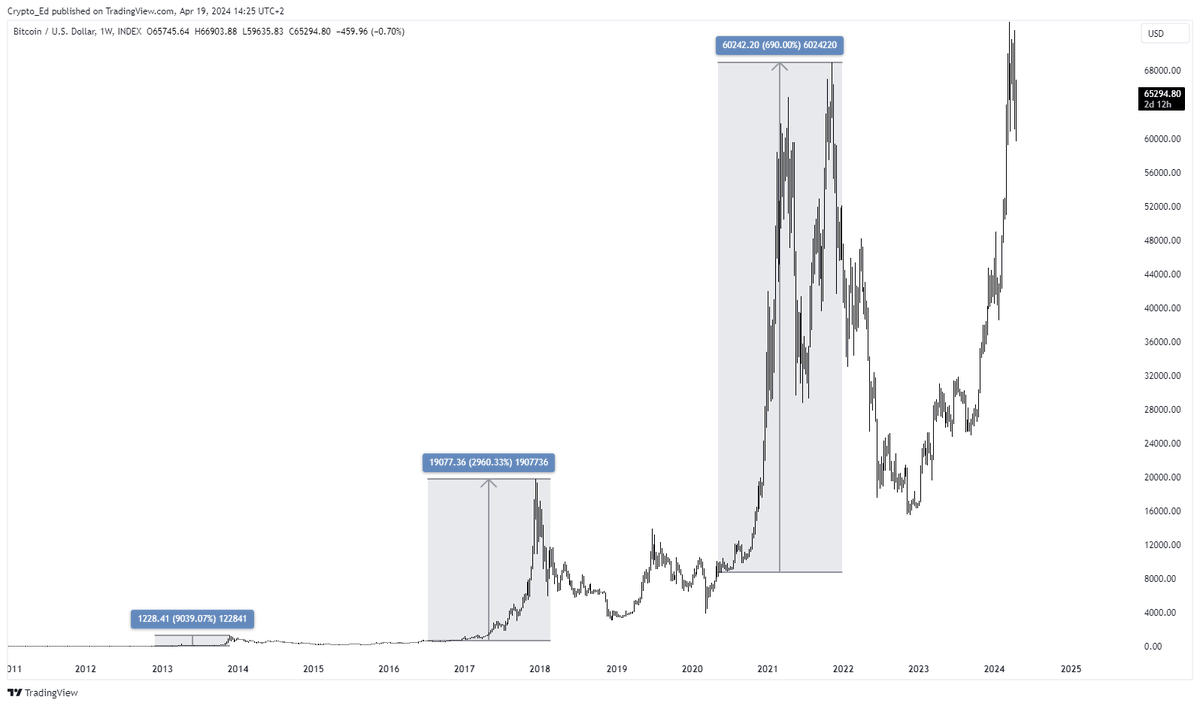In the rapidly changing world of digital money, Bitcoin is the trailblazer, intriguing investors, innovators, and economists with its groundbreaking technology. At the core of Bitcoin’s network is a distinctive occurrence called the halving, which significantly influences its production rate and ultimately determines its price trend.
Today marks the occurrence of Bitcoin’s fourth halving event. Let’s explore the essential aspects of Bitcoin and why this event matters, as well as examine past trends in Bitcoin’s price behavior following a halving.
The Bitcoin reward for mining a new block is set to decrease today, around 8 p.m. Eastern Time on April 19th, at block number 840,000. This change will lower the incentive from 6.25 Bitcoins to 3.125 Bitcoins per block.
Bitcoin’s system automatically reduces rewards for miners by half after every 210,000 blocks, which approximately occurs every four years. Consequently, miners receive fifty percent fewer bitcoins as compensation for their work in validating transactions and adding them to the blockchain. Nevertheless, they continue to collect standard transaction fees for each successfully mined block.
Bitcoin has undergone three prior reduction events of the block reward given to miners through a process called halving. These occurred in 2012 (from 50 BTC to 25 BTC), then in 2016 (from 25 BTC to 12.5 BTC), and most recently on May 11, 2020 (from 12.5 BTC to 6.25 BTC). The upcoming halving will decrease the reward for miners further to 3.125 BTC per block. It’s important to note that there is a finite supply of Bitcoin, with only 21 million coins able to be mined in total.
The halving process will persist up until approximately the year 2140, which is when all bitcoins are predicted to be extracted. Once this milestone is reached, miners will solely derive income from transaction fees.
Understanding Bitcoin
Bitcoin, launched anonymously in 2008 by the figure of Satoshi Nakamoto, functions as a decentralized, digital currency that doesn’t rely on intermediaries such as banks or governments. Instead, it operates through a peer-to-peer network. The technology behind it is blockchain, which acts as a secure and transparent record-keeping system based on a distributed ledger.
In simpler terms, while the value of regular currencies can be influenced and decreased by central authorities through printing more money, Bitcoin’s value remains constant due to its limited supply. There are only 21 million Bitcoins that can ever exist, making it a potential deflationary asset as demand for it increases over time. This scarcity gives Bitcoin significant worth, similar to digital gold.
The Halving Event
A key aspect of Bitcoin’s monetary system is the halving, which happens approximately every four years or after mining 210,000 blocks. During this process, the compensation given to miners for confirming transactions and appending them to the blockchain is reduced by half. The reward began at 50 bitcoins per block, but through a gradually decreasing schedule, it will eventually reach zero.
The halving process performs two essential functions in Bitcoin. Initially, it manages the pace at which new Bitcoins enter circulation, providing a consistent and shrinking supply. Secondly, it enhances Bitcoin’s rarity, mirroring a digital gold rush experience, as the mining cost rises while the available coins decrease.
Miners are remunerated for their efforts by obtaining freshly minted bitcoins as a reward. This reward is referred to as the block reward. It’s through this mechanism that new bitcoins enter the circulation system. Approximately every ten minutes, a new batch of transactions is appended to the Bitcoin blockchain as a new block. The miner who confirms each transaction-filled block is bestowed with the block reward. At present, the block reward amounts to 6.25 bitcoins per block.
Every four years, the number of new bitcoins generated through block rewards gets cut in half. This event is called the Bitcoin Halving (BH). We’re approaching H4, which marks the decrease from the present 6.25 bitcoins reward to 3.125 bitcoins.

Price Impact of Previous Halvings:
Previously, Bitcoin’s halving events have led to notable price changes, though the timing and extent have differed. The initial halving took place in November 2012, signifying a turning point for Bitcoin as it shifted from an obscure curiosity to a valuable digital currency. In the twelve months subsequent to the first halving, Bitcoin’s value skyrocketed from approximately $12 to more than $1,000, representing a staggering increase of over 8,000%.
In July 2016, the second reduction in Bitcoin’s reward occurred. This event signaled a new stage of price growth for Bitcoin. Initially, the response was less enthusiastic than during the first reduction, but Bitcoin’s value began to climb steadily over the ensuing months. By December 2017, Bitcoin had reached an unprecedented peak of nearly $20,000, demonstrating the lasting influence of the halving on market perception and investor decisions.
In May 2020, during global economic instability caused by the COVID-19 pandemic, the latest Bitcoin halving took place. Initially, there were worries about market turbulence. However, Bitcoin proved robust, experiencing a price increase in the subsequent months. By December 2020, Bitcoin had gone beyond its earlier record high, reaching above $20,000 and sparking renewed excitement among institutional and individual investors.
The future price direction of Bitcoin is uncertain, but historically significant price increases have typically occurred in the period following each halving event, as indicated by the chart below.

By examining the Bitcoin price graph with the halvings superimposed, it’s evident that the same striking impact emerges.


Market Dynamics and Speculation:
Bitcoin’s historical price patterns following halvings can offer useful information about market trends. However, it’s important to exercise caution when interpreting these patterns since various factors such as investor sentiment, macroeconomic conditions, regulatory decisions, and technological innovations significantly impact Bitcoin’s price movement.
Additionally, the connection between cryptocurrency price changes and halving events is not constant or straightforward. The volatile nature of cryptocurrency trading includes various elements outside of the halving calendar that impact pricing. Market participants, including traders and investors, frequently exhibit forward-looking tendencies, incorporating the anticipated halving event into their investment strategies. Consequently, there may be price increases prior to the event and subsequent corrections following it.
Today marks the occurrence of Bitcoin’s fourth halving event. Excitement in the crypto community is palpable as they ponder the influence on market behavior and investor attitudes. While past trends hint at a bullish scenario, it’s crucial to consider the complexities of the underlying factors and overarching economic conditions.
Bitcoins transformation from an obscure technology to a widely-used digital currency has been marked by instability, creativity, and tenacity. Pivotal moments like the halving events have significantly influenced Bitcoin’s development, emphasizing its role as a scarce asset that resists inflation and serves as a protective shield against conventional financial markets.
In the unexplored realm of digital money, there’s one fact that stays true: The occurrence of Bitcoin’s halving process will keep intriguing cryptocurrency fans and experts, influencing the development of digital currency as we know it in the future.
Article banner by @worshipbitcoin
Read More
- Apothecary Diaries Ch.81: Maomao vs Shenmei!
- 30 Best Couple/Wife Swap Movies You Need to See
- Gachiakuta Chapter 139: Rudo And Enjin Team Up Against Mymo—Recap, Release Date, Where To Read And More
- Ncuti Gatwa Exits Doctor Who Amidst Controversy and Ratings Crisis!
- Netflix’s ‘You’ Season 5 Release Update Has Fans Worried
- All 6 ‘Final Destination’ Movies in Order
- Every Minecraft update ranked from worst to best
- Summoners War Tier List – The Best Monsters to Recruit in 2025
- Tyla’s New Breath Me Music Video Explores the Depths of Romantic Connection
- DC: Dark Legion The Bleed & Hypertime Tracker Schedule
2024-04-20 02:42